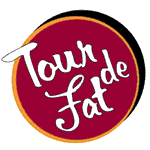A recent study done by Canadian scientists from Health Canada, Environment Canada, and University of Ottawa warns cyclists of the health risks they take when riding in the streets.
Now, they’re not just talking about the everyday fear of being struck by a car, but specifically, the study shows that car pollution and tailpipe exhaust can cause heart problems in cyclists who share the road–and subsequently, the air.
In this study, the scientists attached heart monitors to 42 healthy, nonsmoking cyclists to measure their heart rates before, during, and after their cycling. They also attached air pollution-detecting instruments to their bicycles and assigned some to congested and others to uncongested roads.
It was discovered that those who traversed the more congested roads had a lower heart rate variability after their ride. Heart rate variability, as described in the
SF Chronicle article about this study, is a way to indicate how efficiently the heart can respond to stresses like exercising. The heart of a person with a lower heart rate variability has a harder time responding than the heart of a person with a higher heart rate variability.
What is it about congested roads that make the air so toxic? According to the SF Chronicle again, the fine particles of pollution that escape through tailpipes are “small enough to lodge deep in the lungs. Tiny particles can also cross the blood-brain barrier, potentially harming the nervous system.” And the cars that are known to emit the most of these toxic particles are diesel buses and trucks.
So now that you are properly worried for your health, keep in mind some simple advice from these scientists: (1) Keep farther away from tailpipes, as the the small particles clump together the further they get away from the car, making them too large to lodge deeply in your lungs; (2) Avoid streets with heavy traffic.
While this advice might seem trivial, it is the common sense of it all that will keep you safe.

